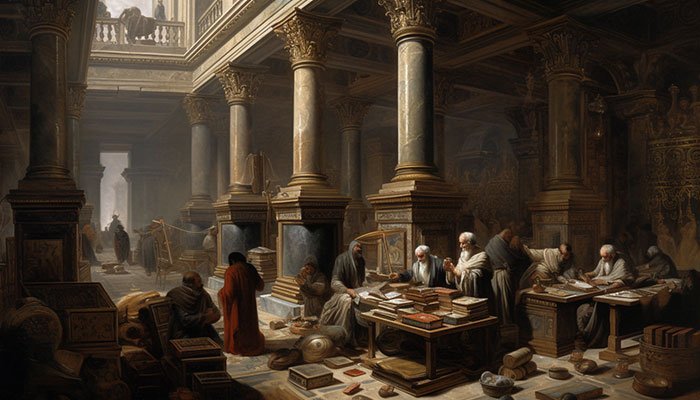
The Library Of Alexandria
Founded in the 3rd century BCE in the vibrant Egyptian city of Alexandria, the library was an integral part of the royal quarter known as the Brucheion. Established either by Ptolemy I or his son, Ptolemy II, it rapidly grew, drawing scholars, thinkers, and writers from all corners of the Mediterranean. The Library of Alexandria wasn’t just a repository of scrolls—it was a shining beacon of intellectual and cultural exchange, a symbol of the ancient world’s enlightenment.
The library was part of a larger entity: the Museion (‘Institution of the Muses’) and contained lecture halls, meeting spaces, and even botanical gardens. This research institution fostered scholarly endeavours across various disciplines.
The library’s treasures weren’t just its scrolls but the minds it nurtured. Great thinkers like Euclid laid the foundations of geometry within its walls. The geographer Eratosthenes, famed for calculating the Earth’s circumference with astonishing accuracy, was its chief librarian at one point. The poet Callimachus, another luminary, penned works that remain influential today.
The exact circumstances of the library’s decline remain shrouded in mystery. While popular lore often cites a great fire as its undoing, the reality is more complex. A series of unfortunate events—Julius Caesar’s invasion, Christian purges, and eventual decrees by Theodosius the Great—culminated in its decline. By the time of the Muslim conquest of Alexandria in 642 CE, the library was likely long gone, living on only in the annals of history and the collective memories of humanity.
The Bibliotheca Alexandrina was inaugurated in 2002 in the heart of modern Alexandria, near the shore where the ancient library once stood.


